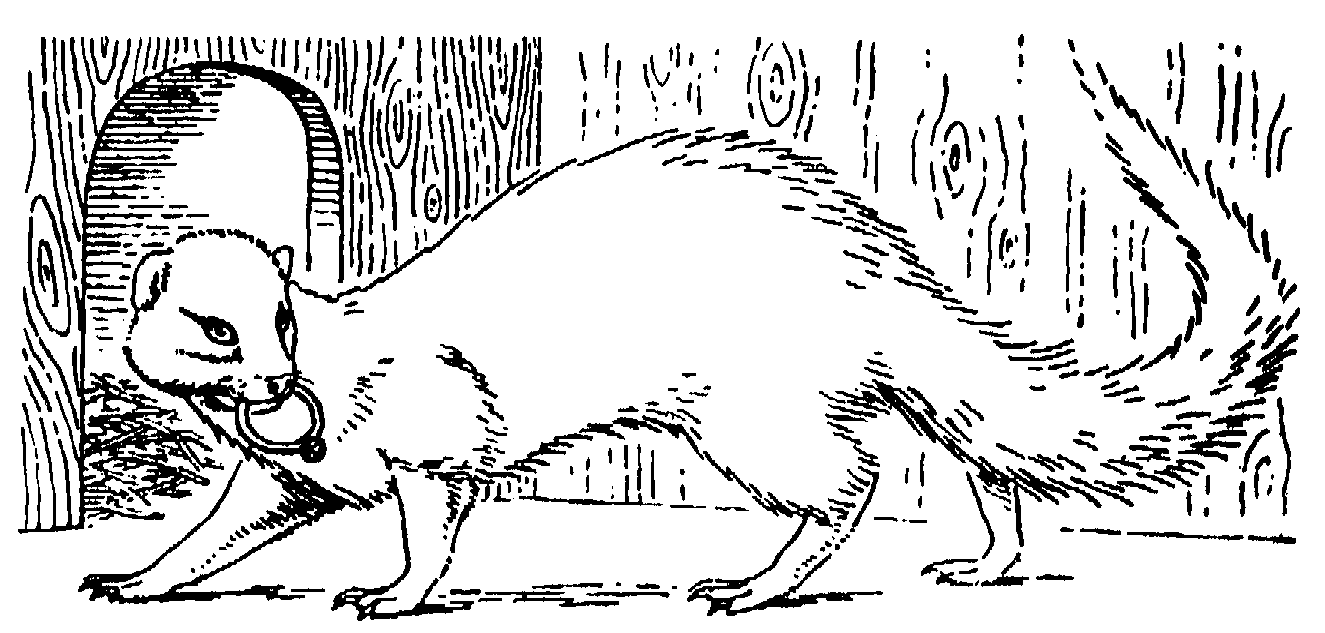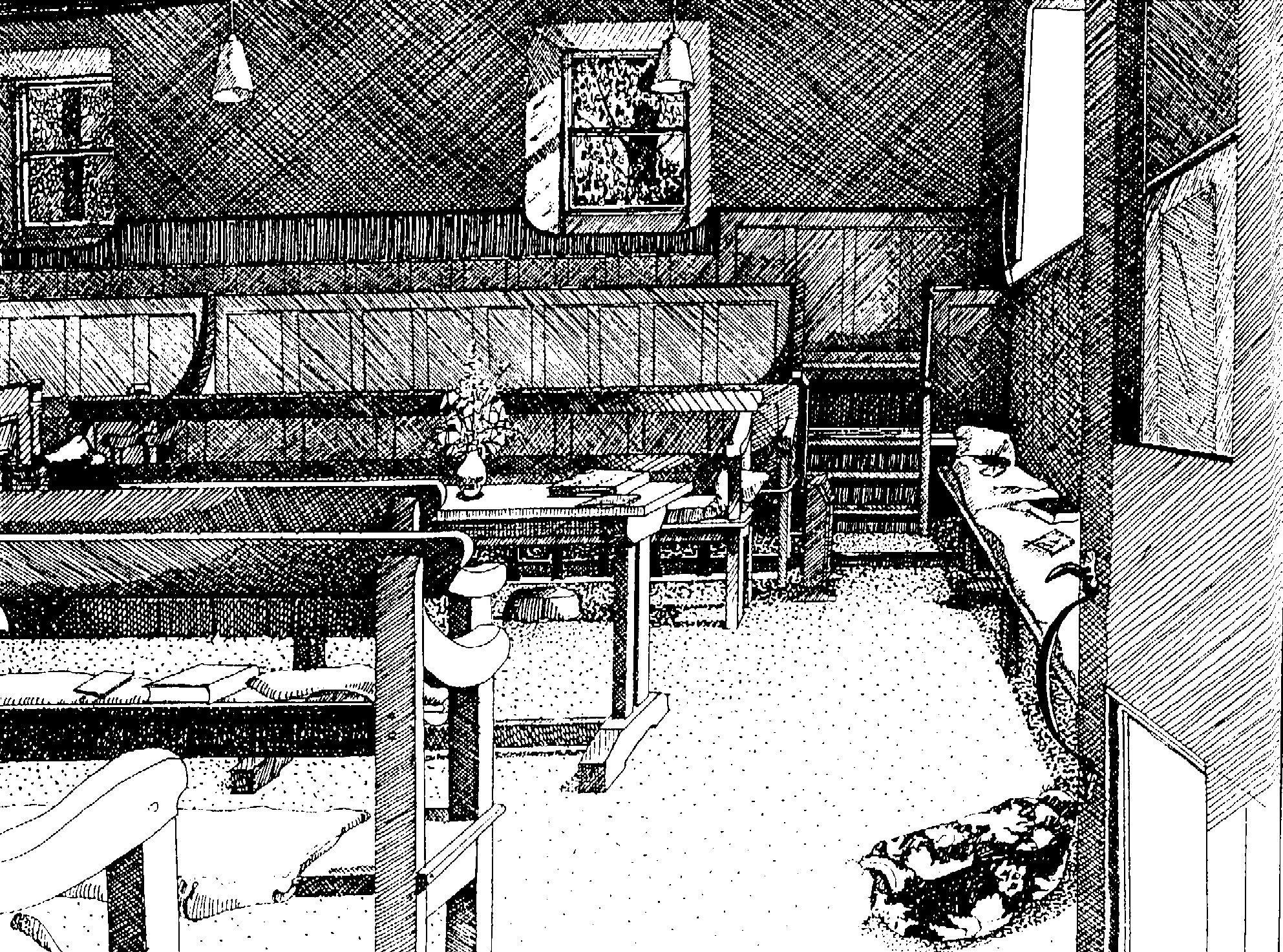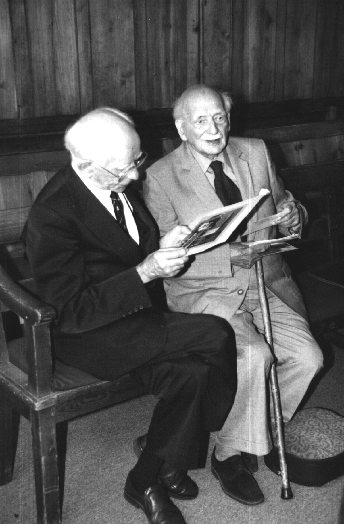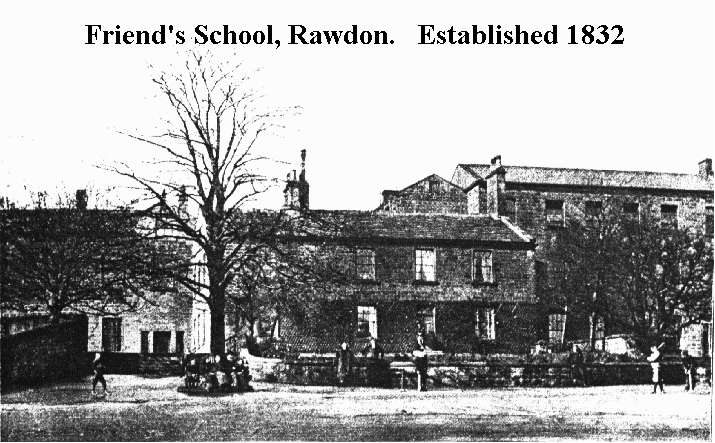Reminiscences from Maurice Barringer
Rawdon Meeting
I am sorry that in Pevsnerís book on the buildings of the West Riding he
completely forgot, because he never visited, this Meeting House built in 1697. I
can see how it happened; high stone walls and a very solid gate, obscuring path
and building, blot it out from Quaker Lane. But Pevsner should have enquired. It
is not to my mind a beautiful building, but I think it looked better with its
ivy cloaking as I remember it, in the first few years of this century.
When I married I found I could, with pleasure, share my wifeís recollections
of Meeting and its Rawdon members.
Essie and I enjoyed our recollections of various Friends who frequently spoke in
Meeting, such as George Ash, whose name appears on the building intended as a
Sunday (or would it be Adult) School across Quaker Lane from the Meeting House.
Whenever George Ash spoke, he always brought in the two words
"notwithstanding" and "nevertheless", and the subject was
either Biblical Prophets or Early Friends. Or both.
I also have in mind the rather surprising occasion when an elderly female Friend
arose in Meeting and sang (unaccompanied of course) through a hymn. I was in my
early teens. For a "born" Friend, though a young one, this was almost
a heresy. I could imagine the roof falling in. And so it very nearly did, but
that was getting on for a hundred years later.
|
I did have an unorthodox pleasure in going to Meeting, in that there was quite a
chance of seeing a mongoose, which often appeared at the window of the granary
section of the Rawdon Co-Op Stores. Perhaps it liked its view of the
"crocodile" of children walking past ?
|
 |
I was told it was an extremely
effective rat-catcher. What a Sabbath recollection!

By the way, the acoustics of the Meeting House are good. I never had any
difficulty in hearing some very soft-pedal speakers. Looking back to the time
when it was a "full" Meeting with the he-and-she arrangement of school
and staff of getting on for 100 added to non-school, it is a great change to see
the modest seating arrangement of today. The atmosphere has just the same
placidity as at Briggflatts, which I have visited so many times in my Dales
days, though never at worship times.
I donít know how long the small building opposite the Meeting House served its
purpose as Sunday or Adult School, but when I went back to Rawdon (though living
at Ilkley) it was used by the Christian Scientists. Perhaps it still is. I have
just remembered that there was once a factory close by ours at Larkfield on the
hill top, operated by (presently Sir) William Cartwright, who manufactured
Moorland Indigestion Tablets. He became a Christian Scientist and changed to
Cake Mixtures. The change made me smile.
Rawdon Friendsí School
My two older brothers and myself had a somewhat peculiar upbringing in that
though Rawdon was our home, we all went away to Ackworth to school. I expect
that was because of our long family association with it, and probably to avoid
any possible charge of nepotism. Both parents were at school there and my motherís
father was for a time book-keeper there. My father taught there until appointed
"Superintendent" at Rawdon in 1890, and my mother was "Mistress
of the Household", a grandiloquent title for a job that was really hard
work; she was not nearly so easy-going as my father. It was in fact housekeeping
for the whole establishment -- staff, scholars, domestics, caterers; farm
supplies, school books, equipment down to the last fire bucket -- the whole
issue.
And she was often quite poorly. Towards the end of the First World War she had
the assistance of a girl who had been at school at Rawdon and then at Lloydís
Bank in Leeds, and who became my wife in 1923. Essie died in 1990.
She remembered with great affection the senior Mistress of her time, a Miss
Alsop, whom I remember with similar liking. And she recollected Richard Swain,
the Senior Boysí Master, and his children Norman and Barbara.
Joseph Spence Hodgson was an expert in the organising of Old Scholarsí
Associations in Friendsí Schools and used to visit them accordingly and to
show how important is the art of elocution. He was given to thumping his chest
and shouting out "USE YOUR SOUNDING BOARD!"
 |
|
Alfred Tallant with Maurice |
Because terms and holidays were of much the same length, we three boys did not
see much of Rawdon term-time operation.
I havenít said anything about the premises, except that they were not really
suitable for a school. On the eastern side was a farm owned by a certain Tom
Penney whose field (one of them) ran down the length of the school playground
and garden. The wall was high-wired to prevent too many cricket balls going
over. From the field came the perpetual rasping sound of a corncrake, now I
believe a very rare bird because of the use of mechanical farm equipment. The
western wall of the playground was that of Richard Swainís "Sunnyside"
garden. The school garden was a delight with a central path bordered by
gooseberry and raspberry bushes, and there was a greenhouse with a fine
grapevine along under its roof. The path led right down to the gate into the
cricket field. I remember the building (partly adaptation of stables) of the new
Cookery School, which was then quite a novel and attractive idea. That was in
the School "Yard" on the entrance from the main road.
Tom Penney kept several peacocks, although he seemed an unlikely chap to do so.
One of them had the habit of flying over the high wall and alighting on the
second-storey (classroom) window-sills. This caused welcome -- except for the
teacher -- excitement. Thinking of birds, in very early days I used to wander
frequently in John Mallinsonís (the School farmerís) domain and got to know
a quite friendly gander who was interested by my polished brass blazer buttons
and tried to peck them off. I also had a firm friend in the farm dog, named Togo
(after an admiral in the Russo-Japanese War). There were always cows, of course,
to supply the school milk.
One other thing; rudimentary astronomy. The School possessed a telescope which
enabled my father (an F. R. A. S.) to help the scholars to appreciate spectacles
such as eclipses and the altering position of Saturnís rings.
There was, of course, a devotional assembly on Sunday evenings in the Lecture
Hall, which faced west and gathered magnificent sunsets through the tall
windows. At the end of the Hall, but separated from it by a sliding screen was
-- perhaps still is -- a small room which served as the Schoolís laboratory. I
presume Richard Swain presided over that department. I believe he was quite an
expert in Natural History. A saying of his (he was Irish) that stays in my mind
was that in speaking of the woeful condition of the mining community he said,
"they only come up to the light of day at night." Under the lecture
hall was the boysí workshop. This additional wing is to the right as one goes
down the School Yard from the road; I believe that it was a later addition to
the premises, but it carried boldly the original founding date of the School.
Also under the lecture room were the two or three music rooms. Considering
Friendsí attitude to music at that time, these must have been a later
addition.
I never attended any of the classes, but I heard a good many of them. The
repetitive technique was carried out. Thatís to say the class had to repeat
some statements they had just heard in unison. I donít know whether this was
truly effective or not.
|
Rawdon School opened on
2nd April 1832.
The School closed in 1921.
John A.Barringer was Superintendent from
1890 to 1918.
|
 |
I donít think I have dwelt on the rather peculiar mixture of the children --
pupils -- whom I remember at the Friendsí School. They were not all Friends,
but included the children of local affluent parents such as mill-owners, the odd
doctor, local trades people, a bunch quite different from rather necessitous
Friends and families to whom a Friendsí School was recommended, so the
educative standard must have been appreciated. When more schools arrived
locally, such as the Secondary School at Yeadon, there was less need for Rawdon
Friendsí School, hence the abandonment in 1921.
Selections from a document by Maurice Barringer.



